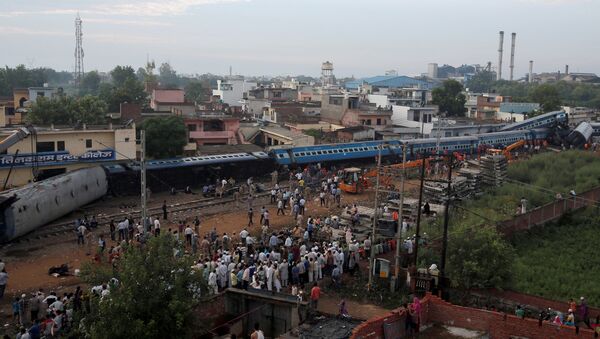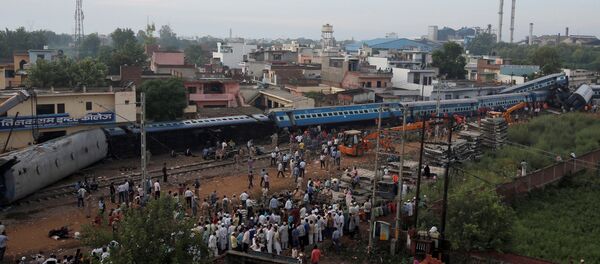India was one of the first countries in the world to build a large railway system. Its 21-mile railway from Mumbai to Tana was built in 1853, under British colonial rule. At the time of independence in 1947, the Indian railway network covered more than 5,000 kilometers, behind only the US, the former Soviet Union and Canada. The surge in India's population and its rapid urbanization meant that the trains, which were relatively affordable, became the most important means of transport for most Indian people. But the explosion in passenger numbers severely burdened the aging railway system, which had been constructed to a fairly low standard. As a result, accidents have not been uncommon.
Different from the world standard — which has a standard gauge of 1,435 millimeters — Indian railways have tracks of various different widths, including 1,676 millimeters, 1,000 millimeters and a small amount of narrow gauge (762/610 millimeters) railways. After 70 years of independence, Indian railways have still failed to achieve uniformity, which has increased the difficulty of management as well as reducing the efficiency of the railway system. And while some trains are capable of running at over 100 kilometers per hour, most of the trains only run at 60 to 80 kilometers per hour, while some are limited to 40 kilometers per hour.
The system is controlled by the Ministry of Railways through the state-owned Indian Railways, which has more than 1.5 million employees and is India's largest state-owned enterprise. It is also probably the most inefficient company in the state sector. Coupled with the Indian government's policy of low-cost train transport and high salaries for railway employees, the Indian railway sector simply cannot accumulate enough funds to update the railway system.
The Indian government is not paying enough attention to vital infrastructure like railways. Instead it is spending billions of dollars a year on weapons. At the same time, India's domestic manufacturing industry has fallen behind, unable to provide technical and equipment support for railway upgrading.
It could be said that India's train accidents are not even accidents, but high-probability events caused by systemic problems. For decades, the situation has not improved. According to the statistics, in 2016 more than 500 train accidents took place in India. This problem cannot be solved by the resignation of the minister of railways.
The slow speed and frequent accidents on India's railways have become symbolic of the backwardness of the country's infrastructure. In the international media coverage of India, the train-related problems also give a negative impression of the country to the international community. Not only do foreign tourists feel insecure about traveling there, but foreign investors also have little confidence in India's infrastructure, which has hindered the development of India's economy and modernization.
Over the past decade, the Indian government has recognized the importance of railways for economic development and it has proposed a series of railway construction plans. After Modi came to power, he expressed ambitions not only to reconstruct the original railways but also to form a "diamond quadrilateral" of railways connecting Delhi, Mumbai, Chennai and Calcutta, the Delhi-Chennai high-speed railway corridor and the Mysore-Bangalore Chennai high-speed rail lines. At the same time, India also become more welcoming to the participation of foreign funds and enterprises. In September 2014, when Chinese leaders visited India, the two countries signed an agreement to invite Chinese enterprises to participate in a project to upgrade the railway from Bangalore to Mysore. India also announced in 2015 that it would invest more than $13 billion over five years to modernize and expand the railway system. In February 2016, India and Japan signed a $12 billion agreement to build a high-speed railway from Mumbai to Ahmedabad.
The Modi government's railway construction plan is exciting, but will not be easy to achieve. First, the huge funds required have not yet been mobilized, partly because private capital hasn't been properly involved, but also because there are still concerns regarding foreign investment. Second, long-term constraints in the institutional infrastructure in India have not been resolved, such as problems related to land expropriation.
Even if Modi can create a miracle and successfully complete his plan, it only involves the enhancement of the main Indian railways, which account for just a small part of the entire Indian railway system. A comprehensive upgrade of the whole system will need a huge amount of money, and will take several decades to achieve. Therefore, news about Indian train accidents is not likely to fade away.
This article was originally published in The Global Times.




